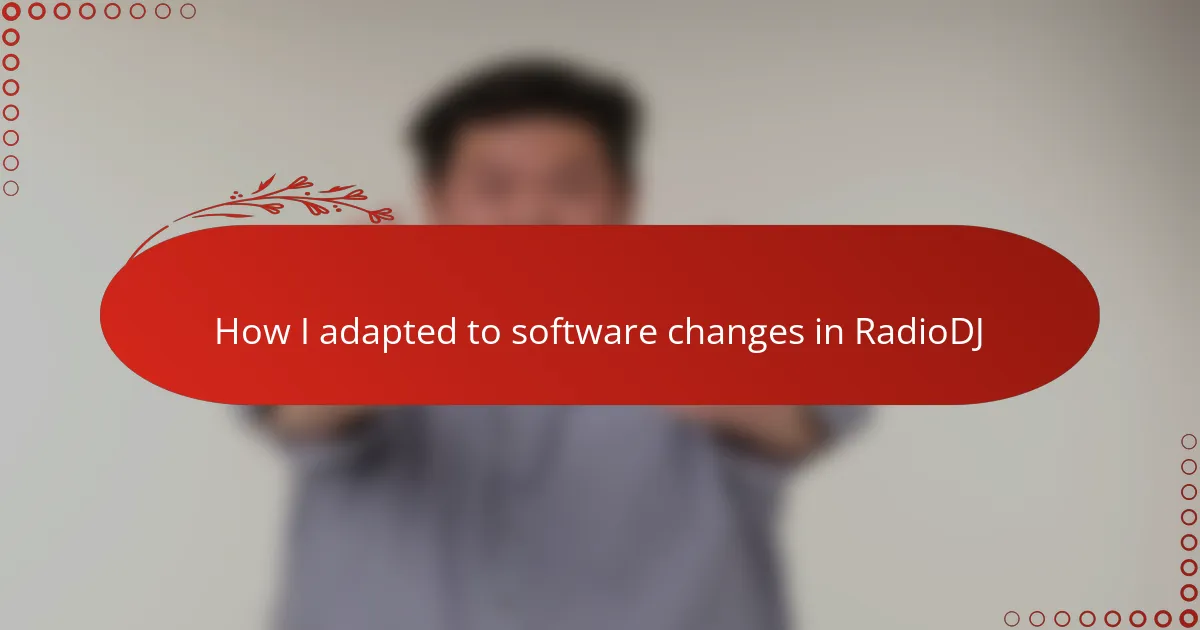Key takeaways
- Understanding RadioDJ’s interface and features, like the playlist scheduler, helped build confidence and creativity in automation.
- Embracing software updates as opportunities for growth and learning aided in adapting to changes and reducing frustration.
- Joining community forums and utilizing resources like help documentation and third-party plugins provided valuable support during transitions.
- Creating a checklist and documenting experiences with each update transformed adaptation into a manageable and organized process.

Understanding RadioDJ Software Basics
Getting to grips with RadioDJ’s interface was my first hurdle. At first glance, it seemed like a complex web of controls, but breaking it down into manageable parts made all the difference. Have you ever felt overwhelmed by new software? I certainly did, but focusing on one function at a time helped me build confidence.
One feature that stood out to me was the playlist scheduler. Understanding how to queue tracks and manage transitions changed how I viewed automation—it felt less like a task and more like crafting a seamless listening experience. It was almost like conducting an orchestra, where every song and sound effect had its precise moment.
The software’s flexibility surprised me. I discovered that mastering essentials such as file management and basic settings created a solid foundation for exploring more advanced tools later on. Did I expect to enjoy learning these basics? Not really, but that initial curiosity made adapting to changes much easier.
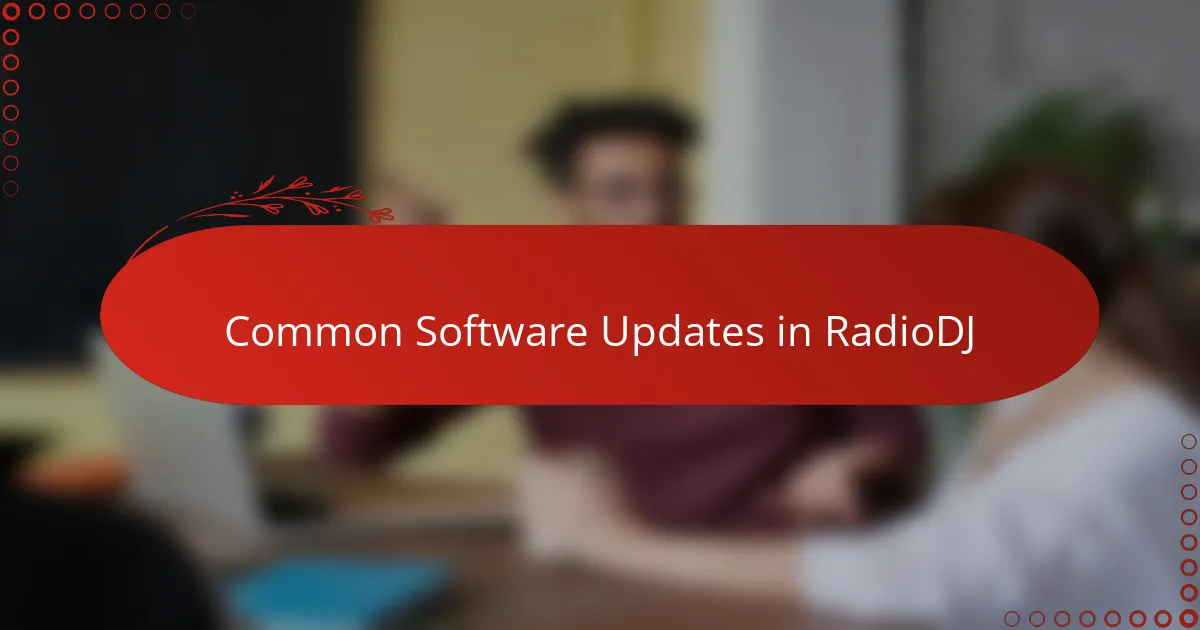
Common Software Updates in RadioDJ
Software updates in RadioDJ often bring new features and bug fixes that can feel both exciting and a bit intimidating. I remember one update added enhanced audio effects—at first, I wasn’t sure how to integrate them smoothly, but experimenting with the new tools actually sparked my creativity.
Sometimes updates address compatibility issues or improve system stability, which, though less flashy, made a huge difference in my workflow. Have you ever felt relief when a pesky glitch finally disappears after an update? That was exactly how I felt—like a weight lifted off my shoulders.
Then there are interface tweaks that shift things just enough to throw you off momentarily. It took me a little while to adjust, but I found that viewing these changes as opportunities to refresh my skills helped me stay positive rather than frustrated. After all, progress often means adapting.
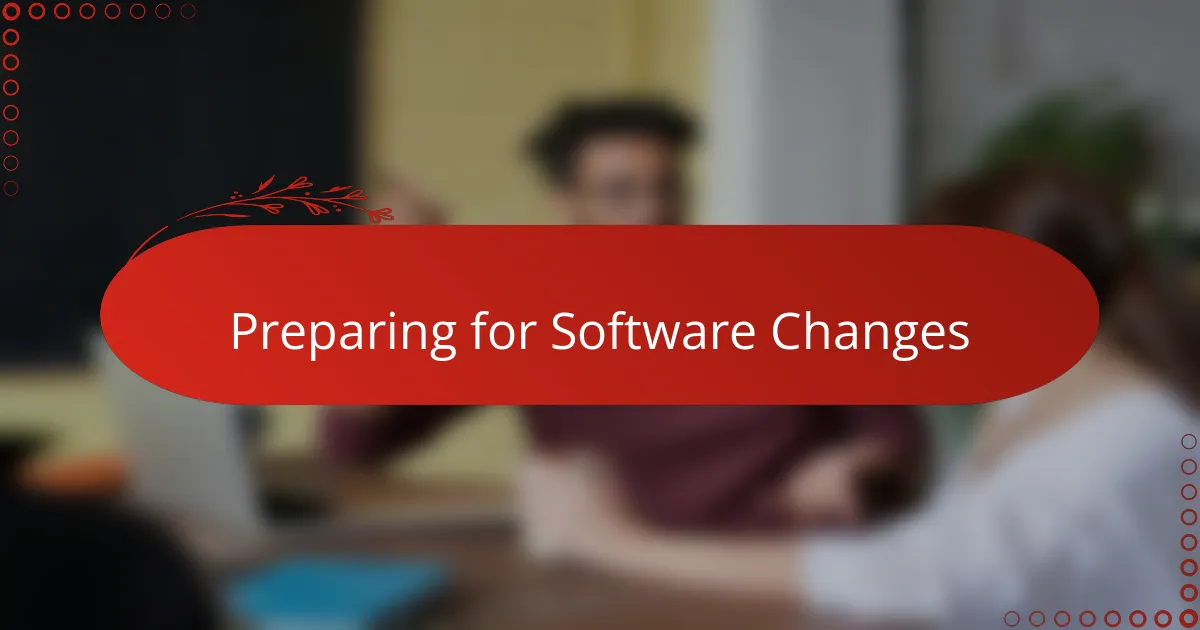
Preparing for Software Changes
Preparing for software changes meant more than just reading update notes for me; it was about setting a mindset ready for adaptation. Have you ever felt caught off guard by a sudden software shift? I did, until I started backing up my settings and playlists before each update—this simple step took away a lot of my anxiety.
I also made it a habit to join RadioDJ forums and follow community discussions. Hearing how others navigated similar updates gave me practical tips and a sense of camaraderie. It’s reassuring to know you’re not alone when the software suddenly feels unfamiliar.
Lastly, I gave myself time to explore new features instead of rushing through the changes. By setting aside a few minutes daily after an update, I could experiment and learn without pressure. That small window of patience really transformed frustration into curiosity.
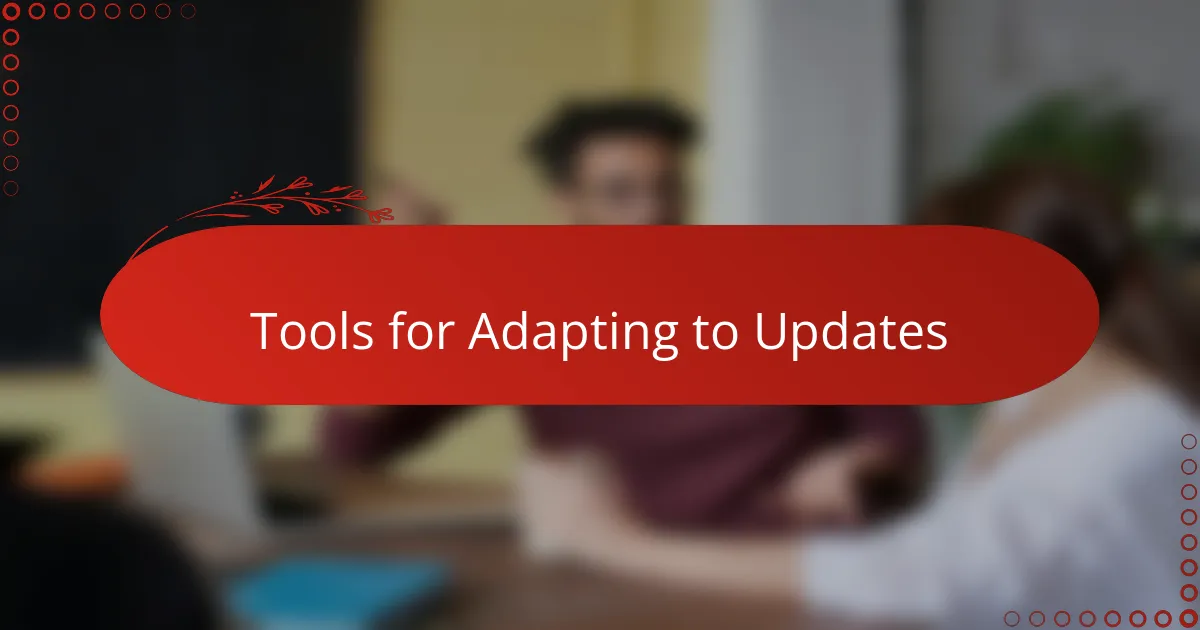
Tools for Adapting to Updates
One tool that became indispensable for me was the built-in RadioDJ help documentation. At first, I hesitated to dive into manuals, but flipping through those pages often answered my burning questions right when I needed them. Have you ever found a quick guide that saves you hours of confusion? That’s exactly what these resources did for me.
I also relied heavily on third-party plugins designed to ease transitions between versions. These add-ons felt like having a safety net, catching compatibility issues before they became major headaches. It’s amazing how a small tool can transform a daunting update into a manageable task.
Of course, the community plugin repositories and update wikis served as ongoing lifelines. Tapping into shared knowledge felt like joining a support group where everyone was learning together. When I felt stuck, those collective insights often gave me the breakthrough I needed to keep moving forward.
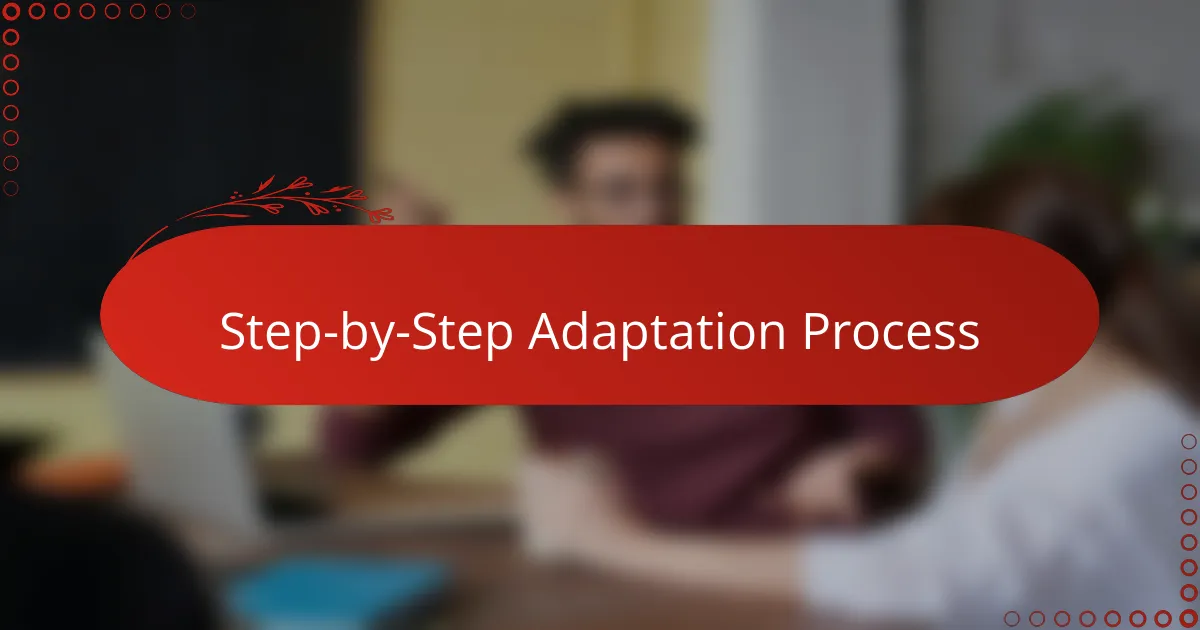
Step-by-Step Adaptation Process
Adapting to software changes in RadioDJ felt like learning a new language bit by bit. I started by tackling one update at a time, focusing on understanding what each change meant for my daily workflow. Have you ever tried to fix just one piece of a complex puzzle before seeing the whole picture? That’s exactly how I approached it, which made the process less overwhelming.
Next, I created a checklist of tasks to complete after every update. This included reviewing new features, adjusting my playlists, and testing automation tools. Having this routine not only kept me organized but also offered a small sense of accomplishment with every completed step. It’s surprising how much progress you can feel when breaking things down into bite-sized actions.
Finally, I made it a point to document my experiences with each update—what worked, what broke, and how I fixed it. This personal log became my go-to resource during future changes and saved me from repeating mistakes. Don’t you find that writing things down helps lock in new knowledge? For me, this habit turned adaptation from a stressful challenge into a learning journey.
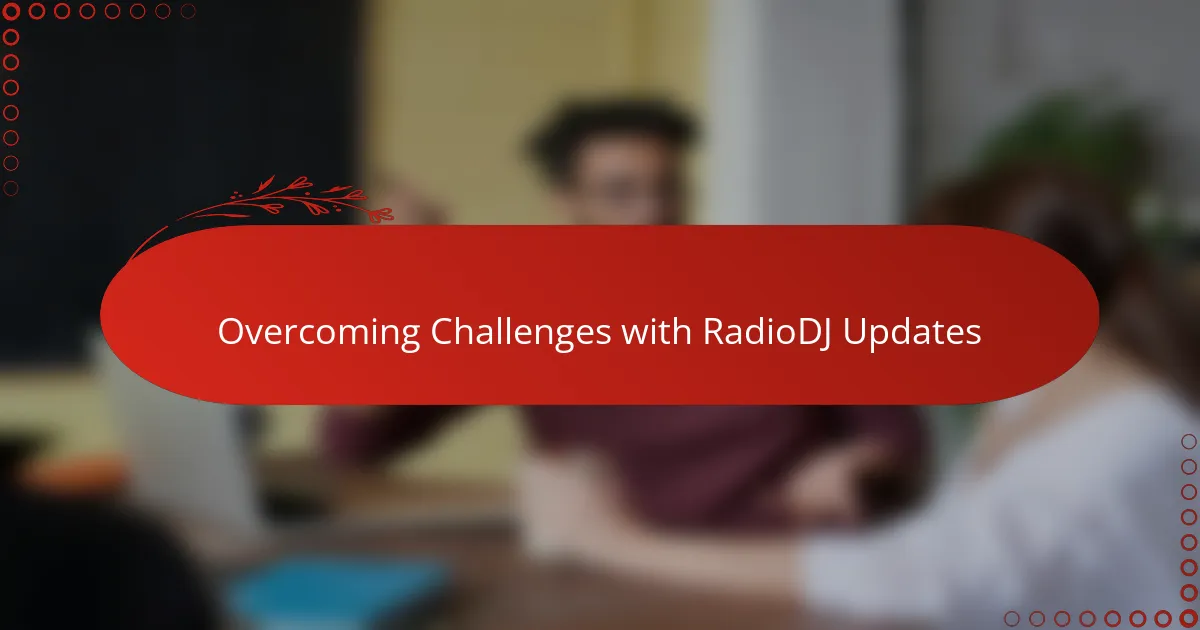
Overcoming Challenges with RadioDJ Updates
Navigating updates in RadioDJ wasn’t always smooth sailing for me. I often faced unexpected glitches that momentarily threw off my shows, and I remember feeling frustrated, wondering if the update was more trouble than it was worth. But each time, patiently troubleshooting and seeking advice from the community helped me regain control—and with every challenge overcome, my confidence grew.
One lesson I learned was to embrace these updates as a chance to sharpen my skills rather than obstacles. How often do we resist change simply because it feels uncomfortable? When I shifted my mindset to see updates as opportunities for growth, I found myself exploring new features with curiosity instead of hesitation, turning uncertainty into excitement.
There were moments when I thought, “Will my carefully crafted playlists survive this update?” To ease that anxiety, I started backing up everything religiously before each installation. This simple habit gave me peace of mind and made the whole process feel less risky. From experience, having that safety net dramatically reduces the stress that usually comes with software changes.
